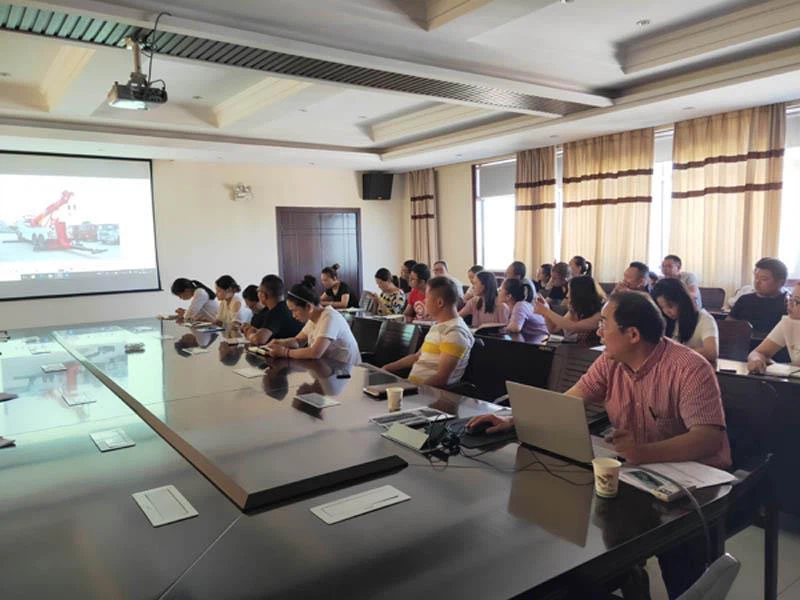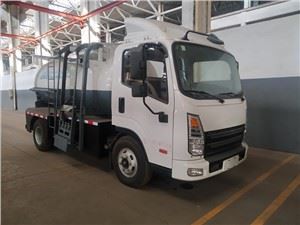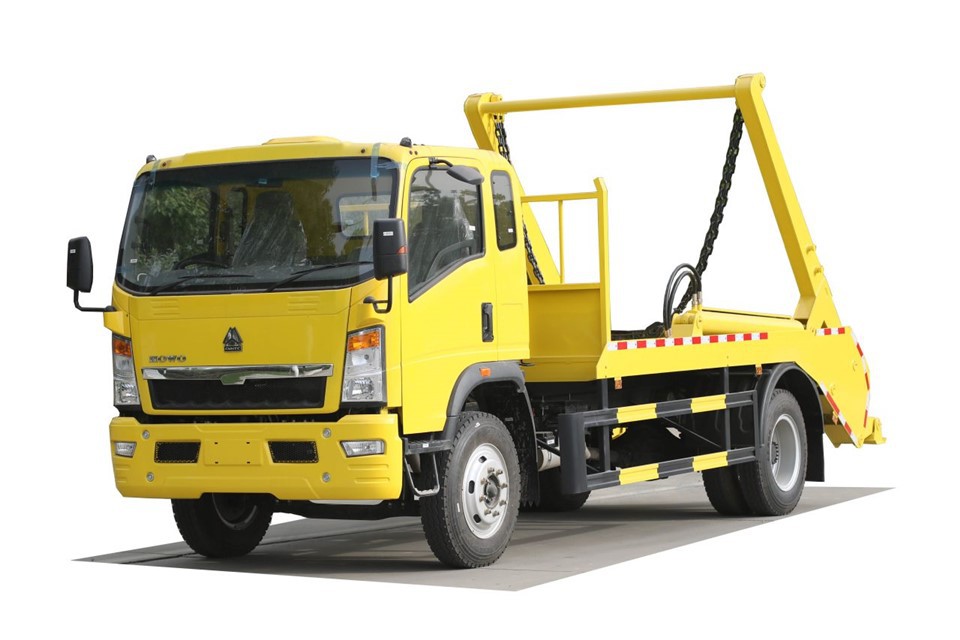Understanding Trash Compactor Trucks: A Comprehensive Guide

In an age where waste management has become a critical concern for cities and municipalities, trash compactor trucks have emerged as essential vehicles in the fight against waste accumulation. These specialized trucks are designed to reduce the volume of waste by compacting it, making transportation and disposal more efficient. In this article, we will delve into the world of trash compactor trucks, exploring their components, uses, benefits, types, maintenance, and the future of waste management solutions.

What are Trash Compactor Trucks?
Trash compactor trucks are heavy-duty vehicles equipped with a mechanism that compresses waste materials to optimize space and load capacity. These trucks collect various types of waste, including residential, commercial, and industrial refuse, and transport them to landfills or recycling centers. Understanding how these trucks work and their significance in waste management is crucial for city officials, business owners, and the general public alike.
How Trash Compactor Trucks Work
Trash compactor trucks are designed with a hydraulic system that compresses waste as it is collected. The basic operation involves:
- Loading: Waste is collected via a rear, side, or front-loading mechanism, depending on the truck design.
- Compaction: Once the waste is loaded into the truck, the compaction mechanism engages. Hydraulic rams press against the waste, reducing its volume significantly.
- Transport: After compaction, the truck transports the waste to disposal sites, where it is unloaded either through hydraulic lift systems or manual methods.
The Importance of Trash Compactor Trucks
Trash compactor trucks play an indispensable role in modern waste management systems. Their importance can be highlighted through the following points:
Efficiency in Waste Collection
By significantly reducing the volume of waste, trash compactor trucks allow waste management companies to collect more refuse per trip. This efficiency leads to lower fuel costs, reduced greenhouse gas emissions, and a more effective waste collection schedule.

Environmental Impact
Compacting waste minimizes the space required for landfills and reduces the frequency of collection trips, thus lowering the carbon footprint of waste management operations.
Economic Benefits
With reduced fuel consumption and optimized waste collection schedules, municipalities can save on operational costs. Furthermore, compacted waste requires fewer resources for transport and landfill space, leading to long-term savings.
Types of Trash Compactor Trucks
Trash compactor trucks come in various configurations, each tailored for specific tasks. Understanding the types available helps cities choose the right vehicle for their waste management needs.
Rear-Loader Trash Compactor Trucks
These trucks are designed for residential waste collection and feature a loading area at the back. Operators can load waste from the rear while driving, making them suitable for urban environments.
Side-Loader Trash Compactor Trucks
Side-loaders have a mechanism on either side of the vehicle, allowing for easy access to waste bins. These trucks are particularly effective in commercial waste collection areas.
Front-Loader Trash Compactor Trucks
Front-loaders are used primarily for commercial waste collection. They can lift and empty large dumpsters from the front, making them ideal for businesses with high waste volumes.
Components of Trash Compactor Trucks

Understanding the components of trash compactor trucks is essential for recognizing how they function and for maintenance purposes. Key components include:
Compaction System
The heart of the trash compactor truck, the compaction system consists of hydraulic rams that compress waste material into a much tighter load, maximizing capacity.
Storage Container
This is the compartment where waste is held after collection and compaction. Storage containers vary in size depending on the truck model.
Loading Mechanism
Depending on the truck type, the loading mechanism may be a hydraulic lift or an automated arm that grabs bins, facilitating efficient waste collection.
| Component | Description |
|---|---|
| Compaction System | Hydraulic-powered mechanism that compresses waste. |
| Storage Container | Holds compacted waste until it is transported to disposal sites. |
| Loading Mechanism | Equipment that collects waste from various sources into the truck. |
Maintenance Tips for Trash Compactor Trucks
Proper maintenance is crucial for the longevity and efficiency of trash compactor trucks. Regular inspections and servicing can prevent breakdowns and extend the vehicle’s lifespan. Here are some practical tips:
Regular Inspections
Schedule regular inspections of key components such as the hydraulic system, compaction blades, and loading mechanisms to ensure they are in optimal working condition.
Hydraulic System Maintenance
Check hydraulic fluid levels and inspect for leaks. Keeping the hydraulic system properly maintained ensures effective compaction.
Cleaning
After each collection day, cleaning the truck can help prevent the buildup of waste residue which can lead to odors and corrosion.
The Future of Trash Compactor Trucks
As technology advances, the design and operation of trash compactor trucks are evolving. Emerging trends include:
Smart Technology Integration
Many manufacturers are incorporating smart technology to monitor waste levels in real-time, optimizing collection routes and reducing fuel consumption.
Electric Trash Compactor Trucks
With the push for sustainability, electric compactor trucks are being developed, promising to reduce dependency on fossil fuels and lower emissions.
Automated Systems
Automation in waste collection is on the rise, with some trucks now featuring self-operating compaction systems that require minimal human intervention.
Examples of Leading Trash Compactor Truck Manufacturers
Understanding the major players in the trash compactor truck market can help in making informed purchasing decisions. Here are some of the leading manufacturers:
Freightliner
Freightliner is known for its reliable and durable compactor trucks, often used by municipalities across the country.
Peterbilt
Peterbilt manufactures a wide range of custom-built trash compactor trucks that cater to diverse waste management needs.
Kenworth
Kenworth trucks are designed with advanced features and efficient engines that provide enhanced performance in waste collection operations.
Frequently Asked Questions (FAQ)
1. What is the average lifespan of a trash compactor truck?
The average lifespan of a trash compactor truck is typically between 10 to 15 years, depending on maintenance, usage, and operating conditions.
2. How much waste can a trash compactor truck hold?
The capacity of trash compactor trucks varies, but most can hold between 10 and 30 cubic yards of compacted waste.
3. What is the difference between a trash compactor truck and a regular garbage truck?
Trash compactor trucks are specifically designed with compaction mechanisms to reduce waste volume, while regular garbage trucks simply transport waste without compacting it.
4. Are trash compactor trucks environmentally friendly?
Yes, trash compactor trucks are more environmentally friendly than non-compacting trucks because they reduce the number of trips required for waste collection and decrease landfill space requirements.
5. What types of waste can trash compactor trucks collect?
Trash compactor trucks can collect various types of waste, including residential refuse, commercial waste, and industrial materials, depending on their design and specifications.
6. How are trash compactor trucks operated?
Trash compactor trucks can be operated either manually or automatically, depending on the technological features included in the model. Training for operators is typically involved to ensure safety and efficiency.
